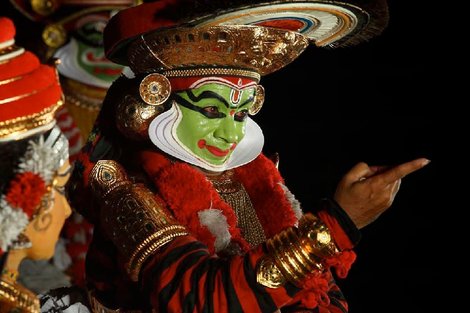 David Shulman, ‘For the last two decades, I’ve been hunting down major works of Telugu poetry composed over the last two hundred years in the tiny kingdoms of the northern Andhra coast, on the Bay of Bengal. Poets of genius, working in places with beautiful names like Madugula, Bobbili, Pakki, and Vizianagaram, produced these texts for a now vanished audience of connoisseurs; the vast majority of them have been lost, probably forever. Once in a while I get lucky and turn up a copy, riddled with holes made by termites and white ants and stained by mold but still more or less legible. Those are the good moments in what is usually a frustrating, indeed almost fruitless quest.
David Shulman, ‘For the last two decades, I’ve been hunting down major works of Telugu poetry composed over the last two hundred years in the tiny kingdoms of the northern Andhra coast, on the Bay of Bengal. Poets of genius, working in places with beautiful names like Madugula, Bobbili, Pakki, and Vizianagaram, produced these texts for a now vanished audience of connoisseurs; the vast majority of them have been lost, probably forever. Once in a while I get lucky and turn up a copy, riddled with holes made by termites and white ants and stained by mold but still more or less legible. Those are the good moments in what is usually a frustrating, indeed almost fruitless quest.
Sometimes, however, there are even more dramatic discoveries—of ancient art forms and practices that have remained vital to this day. Imagine a classicist who, visiting some remote Ionian valley, stumbles on an unknown, uninterrupted performance tradition of classical Greek tragedy going back to the days of Sophocles. In fact, something like this happened on a different stretch of Indian coast, in the southwestern state of Kerala, where scholars have encountered a living tradition of classical Sanskrit drama that has survived intact for more than one thousand years. It is called Kudiyattam—literally, “performing or playing together”; the name may reflect the presence on stage of one or more actors closely attuned to drummers playing the ancient, free-standing mizhavu drums, or it may point to the moment, common to many of the dramas performed, when a lone actor—who has held the audience in thrall over many nights—is joined by another. Kudiyattam performances are never short. In their natural form, they range from twelve hours to over one hundred and fifty hours. This summer I spent all of August in central Kerala with my Sanskrit and Malayalam students, witnessing one of the great compositions of this tradition, the so-called Anguliyankam, or Drama of the Ring, which went on for some 130 hours spread over twenty-nine nights. Read more
